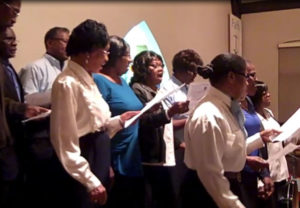November 16, 2011; Source: Evangelical Council for Financial Accountability | The ECFA constantly generates information about its faith-based constituency and members that should interest all nonprofits. Its second “Annual State of Giving Report” is really a tabulation of the financial reports of 1,360 of its 1,600 members (the ones not in the survey were either ECFA accredited in the last two years or did not have full 2009 and 2010 financial information to present). Nonetheless, it is very interesting data on a swath of faith-based organizations, most of them outside the purview of the agencies that examine the finances of 501(c)(3) public charities. By relying on their financial reports rather than survey responses, the ECFA analysis doesn’t have to fret about drawing conclusions from a too-small slice of its membership or asking them for off-the-cuff, often fact-free impressions about the state of their charitable giving and overall finances.
The ECFA report found that cash charitable giving to ECFA members rose from $8.87 billion in 2009 to $9.38 billion in 2010, a 5.8 percent increase during a time when charitable giving—in terms of cash giving—was supposed to have been relatively stagnant. ECFA’s religious constituency showed a pattern that we have described here at NPQ, that the bigger organizations fared better than the smaller ones: ECFA members with more than $10 million in annual revenues saw giving increase 6.7 percent compared to only 1.6 percent for organizations with less than $10 million. Similarly, last year’s ECFA report, comparing giving in 2009 to 2007, found the larger groups had a 1.4 percent increase in total revenue while the groups with less than $10 million in total revenues saw their cash and non-cash giving decline 6.9 percent.
ECFA uses 29 categories of members or member activities, including churches, rescue missions, missionary-sending ministries, religious colleges and universities, etc., so the breakdown of increases or decreases in charitable giving say something about giving to religion but also about charitable-giving interests in general. We compared the 2010 and 2011 reports for the following tally of increases and decreases in cash donations:
|
Organizational Segment |
Change in Cash-Donated Income 2007–2009 |
Change in Cash-Donated Income 2009–2010 |
|
Adoption |
10.10% |
14.70% |
|
Alcohol/drug rehabilitation |
-5.70% |
-8.50% |
|
Associations |
-7.90% |
-1.50% |
|
Bible study |
9.70% |
-0.90% |
|
Camps and conferences |
-18.10% |
7.10% |
|
Child sponsorship |
27.70% |
24.30% |
|
Children’s homes |
3.10% |
4.10% |
|
Church: denominations |
-1.80% |
4.60% |
|
Church: local |
0.20% |
4.40% |
|
Community development |
11.50% |
12.00% |
|
Counseling |
-10.20% |
2.70% |
|
Education: higher education |
-15.90% |
2.10% |
|
Education: K–12 |
-22.00% |
4.80% |
|
Evangelism |
-2.90% |
3.40% |
|
Foundations Sign up for our free newslettersSubscribe to NPQ's newsletters to have our top stories delivered directly to your inbox. By signing up, you agree to our privacy policy and terms of use, and to receive messages from NPQ and our partners. |
23.10% |
68.80% |
|
Leadership training |
-23.90% |
2.40% |
|
Literature publishing |
-45.50% |
9.20% |
|
Media |
4.40% |
1.40% |
|
Medical |
-12.60% |
-15.80% |
|
Messianic |
3.60% |
6.70% |
|
Missions: international |
5.80% |
-1.90% |
|
Missions: domestic |
-2.70% |
-1.70% |
|
Missions: short-term |
-4.30% |
13.40% |
|
Orphan care |
3.00% |
20.50% |
|
Pregnancy resource centers |
-0.40% |
1.70% |
|
Prison |
-17.10% |
-5.90% |
|
Relief and development |
-13.00% |
8.40% |
|
Rescue missions |
5.20% |
-1.90% |
|
Student/youth |
2.20% |
-6.60% |
|
Total |
-2.30% |
5.80% |
Notice the areas of significant growth through the recession—religious foundations, child sponsorship, orphan care, community development, and adoption, and the areas of steep declines countering the overall comparative robustness of giving to religious organization in the ECFA fold—medical, alcohol/drug rehabilitation, prison ministries.
The completeness of the ECFA findings, even if only about ECFA’s membership, is thought provoking and instructive about the dynamics of charitable giving to different classes of tax-exempt entities.—Rick Cohen












